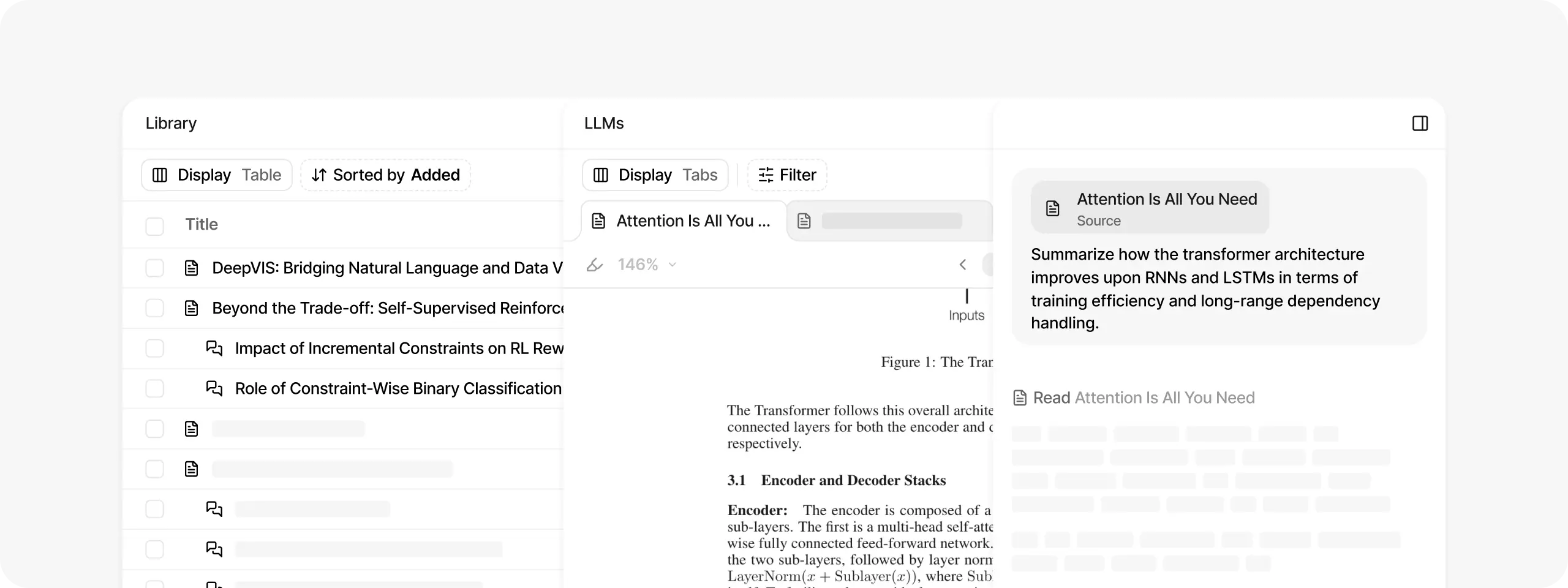How to find research gaps: tools and steps
Here’s the thing about research gaps: they’re hiding in plain sight.
Last week, a PhD student discovered that no one had previously studied the impact of social media on the sleep patterns of remote workers. She spotted this gap in 20 minutes using AI to analyze existing research. Her colleague? Three months of manual journal searches with nothing to show.
The difference was knowing how to use AI to assist in finding research gaps systematically. We’re about to show you exactly how she did it, starting with what research gaps are.
What types of research gaps are there?
Not all gaps are worth pursuing. Some are genuine opportunities waiting for the right researcher. Others are dead ends that will waste months of your time. Recognizing what type of gap you’ve found helps you decide if it’s worth your effort. Here’s how to spot each one.
Literature gaps
This is when you stumble across a topic that should have tons of research but doesn’t.
The key warning sign? You keep finding the same handful of authors cited over and over because there’s nobody else working on it.
Example: AI chatbots are now prevalent in healthcare, but only three solid studies exist on their impact on elderly patients’ medication adherence. Meanwhile, millions of seniors are using these apps daily. That’s a massive literature gap.
Methodological gaps
Everyone’s studying the same thing, but they’re all using outdated or limited methods. It’s like trying to understand ocean depth with a ruler instead of sonar. The research exists, but the approach is holding back real insights.
Example: Teen depression research still relies heavily on ‘How do you feel?’ surveys filled out once a month. But teens carry smartphones that track their sleep, social interactions, and activity levels 24/7. That behavioral data could reveal depression patterns that surveys miss.
Theoretical gaps
Researchers have collected a wealth of data and interesting findings, but nobody has connected the dots to explain why things work this way.
Example: We know remote work affects team creativity—some teams thrive, others fall apart. But there’s no solid framework explaining which factors matter. Is it communication frequency? Team size? Project type? Someone needs to build that theory.
Empirical gaps
The research exists, but it’s missing huge chunks of people or situations.
Researchers often stick to convenient populations (college students, anyone?) and miss groups that could completely flip their findings.
Example: Cyberbullying research obsesses over teenagers, which makes sense. But what about professional adults dealing with online harassment in remote workplaces? Different age, different context, potentially very different solutions needed.
Practical gaps
Academic research shows something works in controlled lab conditions, but no one has figured out how to make it work in real life yet.
Example: Hundreds of studies prove mindfulness reduces anxiety. Great! But try finding practical guides for implementing mindfulness programs with overworked, skeptical healthcare workers during 12-hour shifts.
What are common research gap analysis mistakes?
Watch out for these common mistakes.
- Narrow literature searches: Searching only your field while ignoring related disciplines that might have already covered your ‘gap’
- Confirmation bias: Looking for evidence that supports your preferred research direction while ignoring studies that contradict it
- Insufficient synthesis: Reading individual papers without connecting findings to see the bigger picture of what’s missing
- Unverified assumptions: Assuming something hasn’t been studied just because you haven’t found it in your initial search
- Missed interdisciplinary insights: Overlooking relevant work from psychology, sociology, computer science, or business that could inform your research area
Traditional vs. modern gap analysis methods
While researchers’ methods for finding gaps have evolved since the days of dial‑up, change has been far slower than in other fields. Many still rely on manual, traditional approaches, while other industries embrace automation and AI. Academic research remains only partly modernized, slowed by a culture of rigor, skepticism toward AI’s reliability, fears of eroding critical thinking, and the absence of clear institutional norms for using these tools.
Traditional manual approach
- Painfully slow process: You’ll spend 3-4 months just reading papers before you even know if there’s a real gap. That’s assuming you don’t get sidetracked by interesting tangents (spoiler: you will)
- Limited brain capacity: Your brain taps out after reading 50-60 papers. However, meaningful gaps often emerge from patterns across more than 200 studies. You’re missing the big picture because it’s too big to see
- Human bias: You get excited about a potential gap, then unconsciously skip over papers that might contradict your hunch. It’s human nature, but it’s also research suicide
- No standard playbook: Ask five researchers to find gaps in the same field, and you’ll get five completely different answers. There’s no standard approach, which means lots of wasted effort and missed opportunities
- Hard to prove claims: You think you found something, but how do you prove it? Traditional methods make it nearly impossible to verify that your gap is real and not just something you overlooked
AI-assisted gap analysis in research
- Massive scale analysis: AI can process thousands of papers in hours. It catches studies from adjacent fields that manual searches typically miss, but could be crucial to your research
- Consistent evaluation standards: Every paper gets analyzed using the same criteria. You get a consistent evaluation of what’s missing from the literature
- Superhuman pattern detection: AI spots patterns across massive datasets that would take humans years to notice. It might find that studies consistently avoid certain demographics or methodological approaches
- Evidence-backed gap claims: When AI identifies a gap, it shows you exactly which papers it analyzed and why it concluded something’s missing. Your gap claims become defensible, not mere hunches
- Real-time research monitoring: Set up alerts so you know immediately when new research starts filling your gap. No surprises when you’re halfway through your study and discover someone else beat you to it
Step-by-step gap analysis process
A solid process (plus the right research tools) help you stay focused, and enjoy connecting the dots. Let’s break it down.
Step #1: Define your research domain
Before diving into papers, set your ground rules. Here’s what to lock in:
- Inclusion and exclusion criteria, so you’re not constantly second-guessing yourself
- Key terms and definitions that stay consistent throughout your review
- Time boundaries (like: only papers from the last 10 years)
- The disciplines and subdisciplines you’ll pull from
Use concept mapping to visualize these connections. Whether it’s a messy whiteboard or digital tools like CmapTools, seeing the relationships helps you spot blind spots early.
Don’t forget to consider which disciplinary databases you’ll need. PsycINFO for psychology, ERIC for education, MEDLINE for health sciences, IEEE Xplore for engineering—each field has specialized repositories that general databases might miss.
Step #2: Create a comprehensive literature collection
This is your research scavenger hunt, but with strategy. Cast a wide net across multiple databases and don’t limit yourself to traditional academic sources.
Your collection strategy should include:
- Multiple database sources: Hit Scopus, Web of Science, Google Scholar, arXiv, and field-specific repositories
- Beyond published papers: Include preprints, white papers, conference proceedings, and gray literature that often contains cutting-edge insights
- Cross-linguistic sources: Explore non-English research if your topic crosses geographic boundaries
- Citation chasing: Follow reference trails from key papers to discover foundational work you might have missed
Anara becomes your power AI tool for research gap analysis here. While you’re planning where to look, it’s already pulling papers from multiple sources in one go—no repeats, no missing metadata. You’ll see author info, year, methodology, and even the abstract structured and tagged.
Let’s say you’re looking into climate resilience frameworks. Anara can surface a hundred relevant studies by searching academic repositories and your own research collection.
Step #3: Organize and analyze your library systematically
Once your library’s full, it’s time to cut the clutter by making sense of what you have.
Break each paper down by:
- Theoretical lens
- Methodology
- Sample/population studied
- Key variables or patterns
Pay special attention to contradictory findings. They’re often more revealing than consensus and can point to unexplored moderating variables or context-dependent effects.
You could do this manually, sure. But with Anara’s AI reference management system you can search through your entire library or specific papers organized by topic, framework, and even recurring themes. You can jump straight to that one folder with qualitative interviews in Southeast Asia.
That means fewer spreadsheets, less CTRL+F rage, and a much clearer sense of what you’re working with.
Step #4: Compare studies to spot patterns
Now it’s time to zoom out. What do these studies have in common? What’s missing?
You’re looking for:
- Overused methods (and those barely touched)
- Theories that dominate vs. those never mentioned
- Geographic or demographic blind spots
- How themes have shifted over time
Type Anara a question—Which age groups are underrepresented?—and it combs through your library (and the web if you‘d like) to give you a visual breakdown. Want to see which countries dominate your dataset? Done. Need to spot trends by decade? Anara charts them.
Step #5: Identify and validate meaningful gaps
By now, your gaps should be starting to show. But they’re not useful until you can prove they exist.
Start documenting:
- What’s under-researched or entirely missing
- Which frameworks or methods no one’s applying
- Populations left out
- Any surprising contradictions
The key is validation. Anara helps you back up every claim by linking your gaps to exact excerpts and citations from your imported papers. So when you say no one’s studied AI implementation in low-income school districts, you’re citing 15 papers that all stopped short.
So when you say no one’s studied AI implementation in low-income school districts, you’re citing 15 papers that all stopped short.
Step #6: Evaluate the significance of your findings
Not every gap deserves your next three years of research. Some are academic curiosities. Others could reshape entire fields or solve real-world problems.
Evaluate each gap on:
- Practical relevance: Would closing this gap help people or solve important problems?
- Funding potential: Do current research priorities and funding trends support this work?
- Research feasibility: Can this gap be addressed with available methods, resources, and ethical approval?
- Career alignment: Does pursuing this gap fit your expertise, interests, and institutional context?
By the end of this assessment, you’ll have moved from a vague sense that ‘something’s missing’ to a defendable argument for why specific research is both needed and worth pursuing.
Best research gap finder tools
The right tools for finding research gaps can transform the overwhelming process into a systematic exploration of unexplored territories.
1. Google Scholar (Best for broad literature discovery)

via Google Scholar
Google Scholar works like a giant research radar, scanning across disciplines to find potentially relevant papers. When you're starting your gap analysis journey, this breadth becomes invaluable.
However, Scholar stops at discovery. Once you've gathered your papers, the gap identification work falls entirely on your shoulders.
Google Scholar best features
- Track citation counts and trends over time
- Set up alerts for new publications in your research area
- Access author profiles and collaboration networks
- Find related articles through recommendations
2. Anara (Best for AI-powered gap identification)
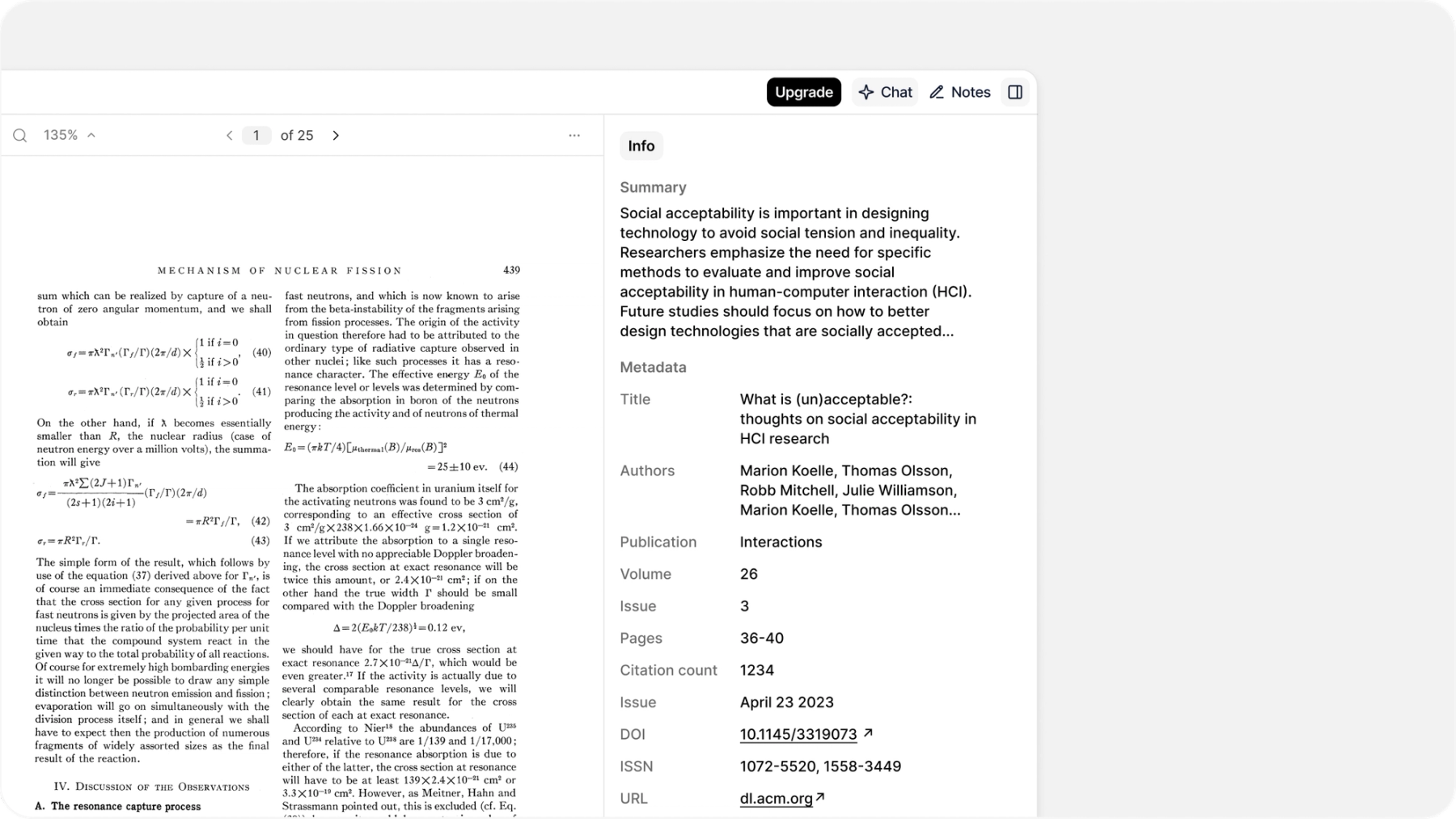
Trusted by over 2,000,000 researchers, Anara enables you to upload your literature literature collection, search the web to find missing papers and answer your research questions.
Instead of manually reading through papers to spot what's missing or swiching between tabs, you can ask direct questions like ‘What methodologies haven't been tested with elderly populations?’ or ‘Which theoretical frameworks are underexplored in climate research?’ and the platform analyzes your entire corpus and the web simultaneously, identifying patterns and absences across multiple studies.
What sets Anara apart is its source verification system. Every gap it identifies comes with highlighted evidence from the research papers. This means you can trust the insights without second-guessing whether the AI has fabricated anything.
Anara best features
- Ask natural language questions about specific research gaps and get comprehensive answers from your library ad the web without leaving Anara
- Browse academic databases and explore relevant studies across disciplines without switching between tabs
- Receive source-highlighted evidence for every gap claim made
- Accurately cite all sources used in your work, following a specific citation style (like APA, MLA, or Chicago)
- Tackle complex research questions with ease: Anara can handle multi-question tasks, gather the answers, and deliver them in one final, consolidated response
- Collaborate with co-authors and research teams
3. Web of Science (Best for citation network analysis)
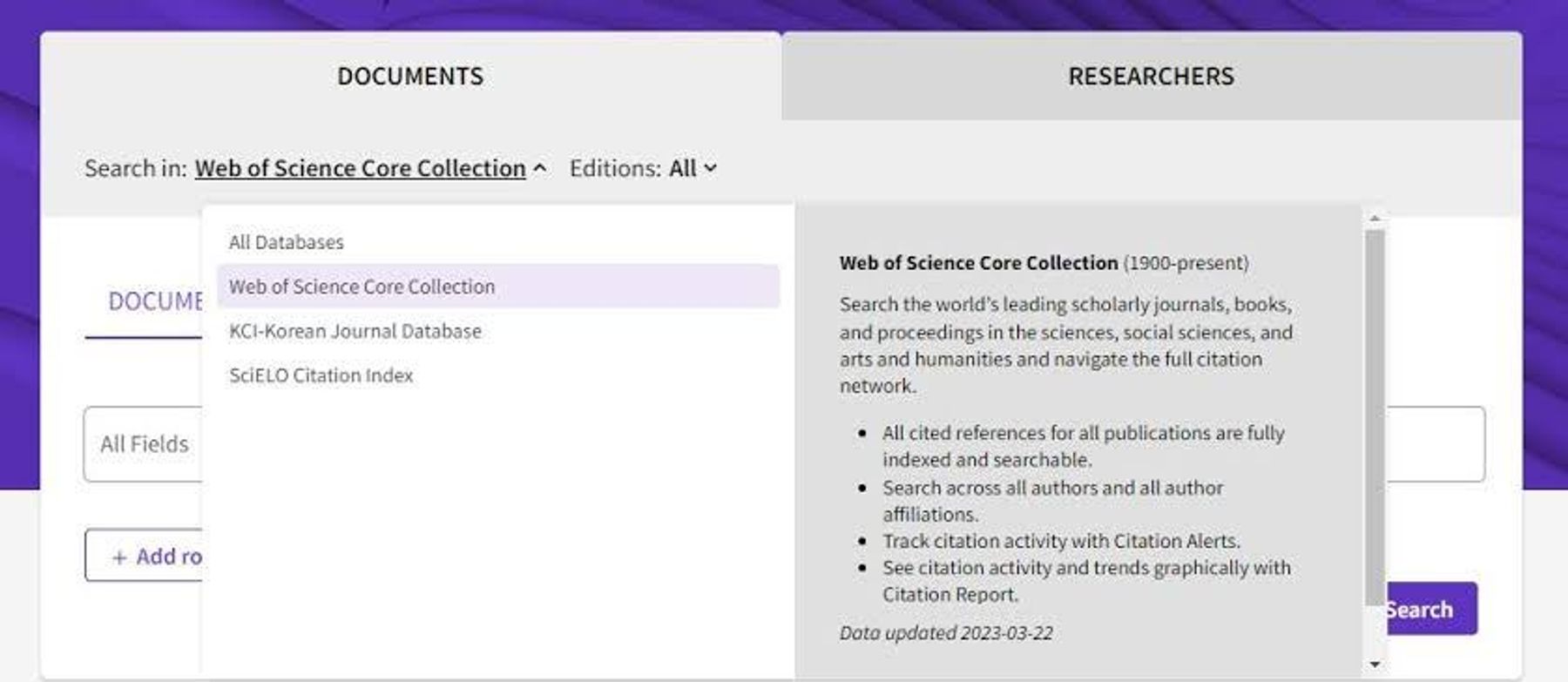
via Web of Science
Web of Science focuses on high-impact journals and detailed citation relationships. For gap analysis, this becomes useful when you're trying to understand which research directions have gained traction and which have been abandoned.
You can trace citation patterns to identify areas where initial studies never received follow-up research.
Web of Science best features
- Filter results by journal impact factor and publication quality
- Track research impact across different time periods
- Export detailed citation data for bibliometric analysis
- Access conference proceedings alongside journal articles
4. Covidence (Best for systematic review organization)
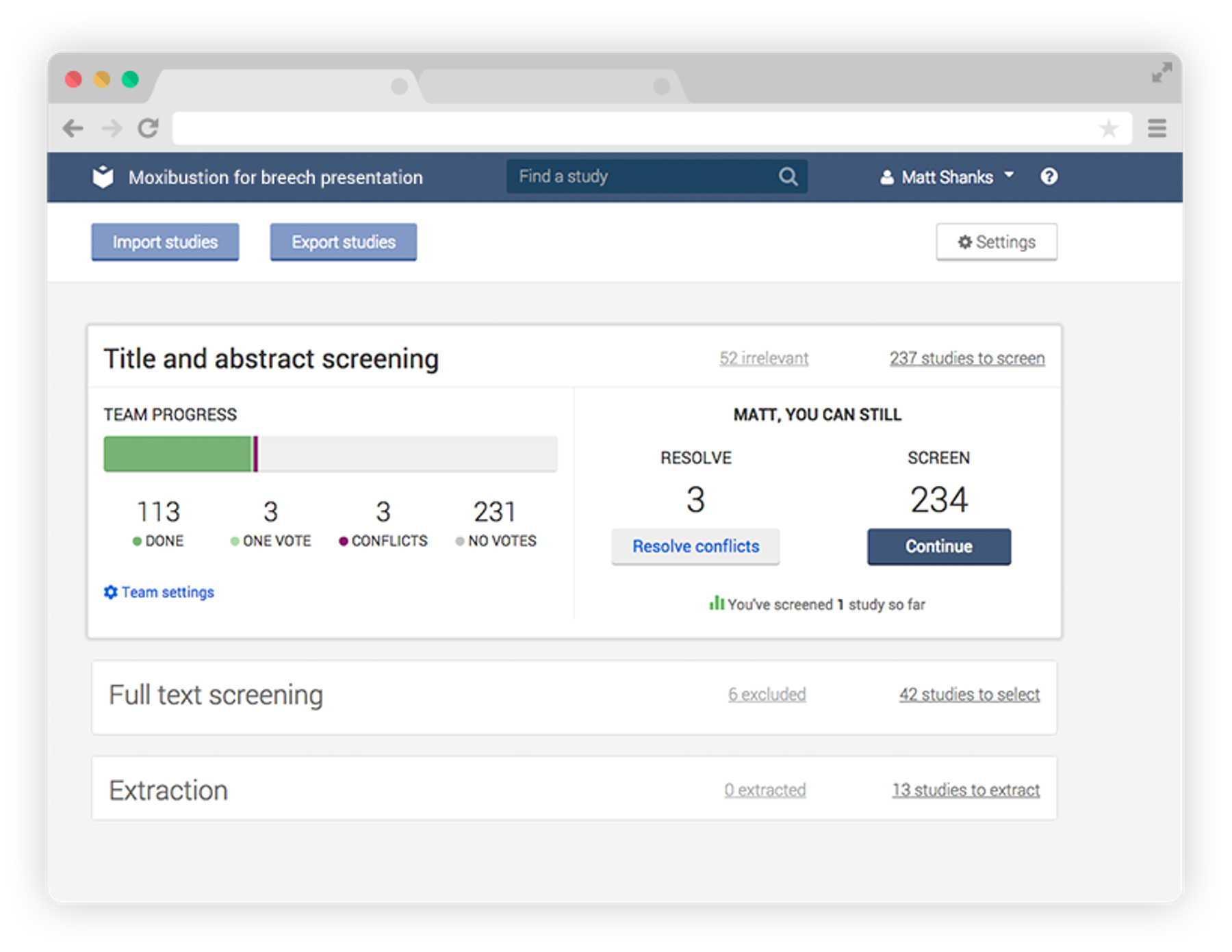
via Covidence
Covidence transforms chaotic literature reviews into structured processes, which can help with gap identification in systematic ways. As teams work through papers systematically, patterns about what's missing often emerge naturally during the data extraction phase.
Still, gap recognition remains a manual cognitive process that requires human interpretation.
Covidence best features
- Manage screening workflows with multiple reviewers
- Extract data using customizable forms and templates
- Resolve conflicts between reviewers through built-in tools
- Generate PRISMA flow diagrams automatically
5. Elicit (Best for rapid literature scanning)
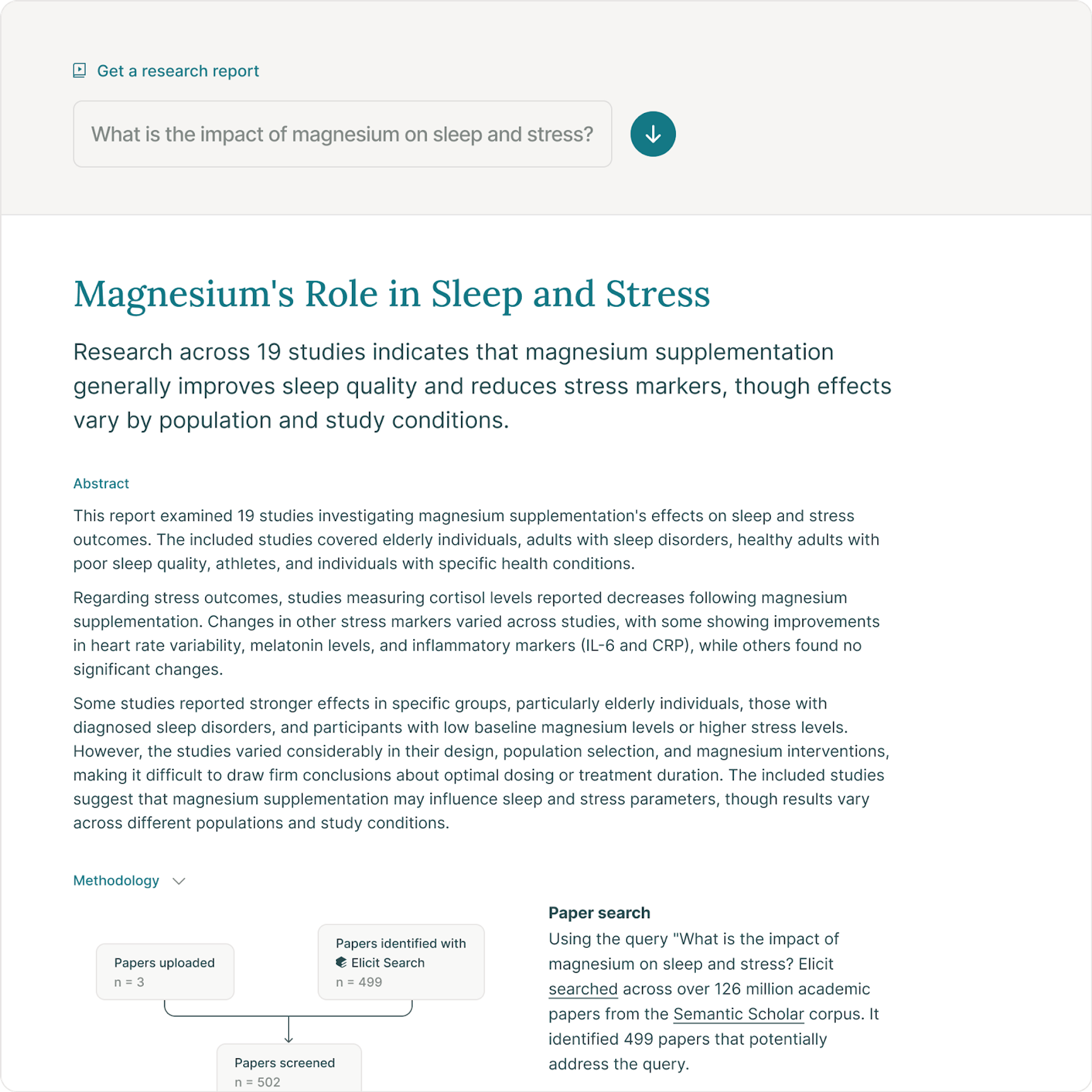
via Elicit.com
Elicit uses AI to review literature and quickly scan through academic papers and extract relevant information about your research questions. This rapid scanning capability helps identify potential gaps by showing you what approaches have been tried and what populations have been studied.
The analysis tends to stay at surface level, though, since this AI research tool focuses on what exists rather than what's missing.
Elicit best features
- Generate research question-focused paper summaries
- Extract key findings and methodologies automatically
- Compare results across multiple studies in a table format
- Filter papers by study design and population characteristics
6. Scite (Best for contradiction spotting)
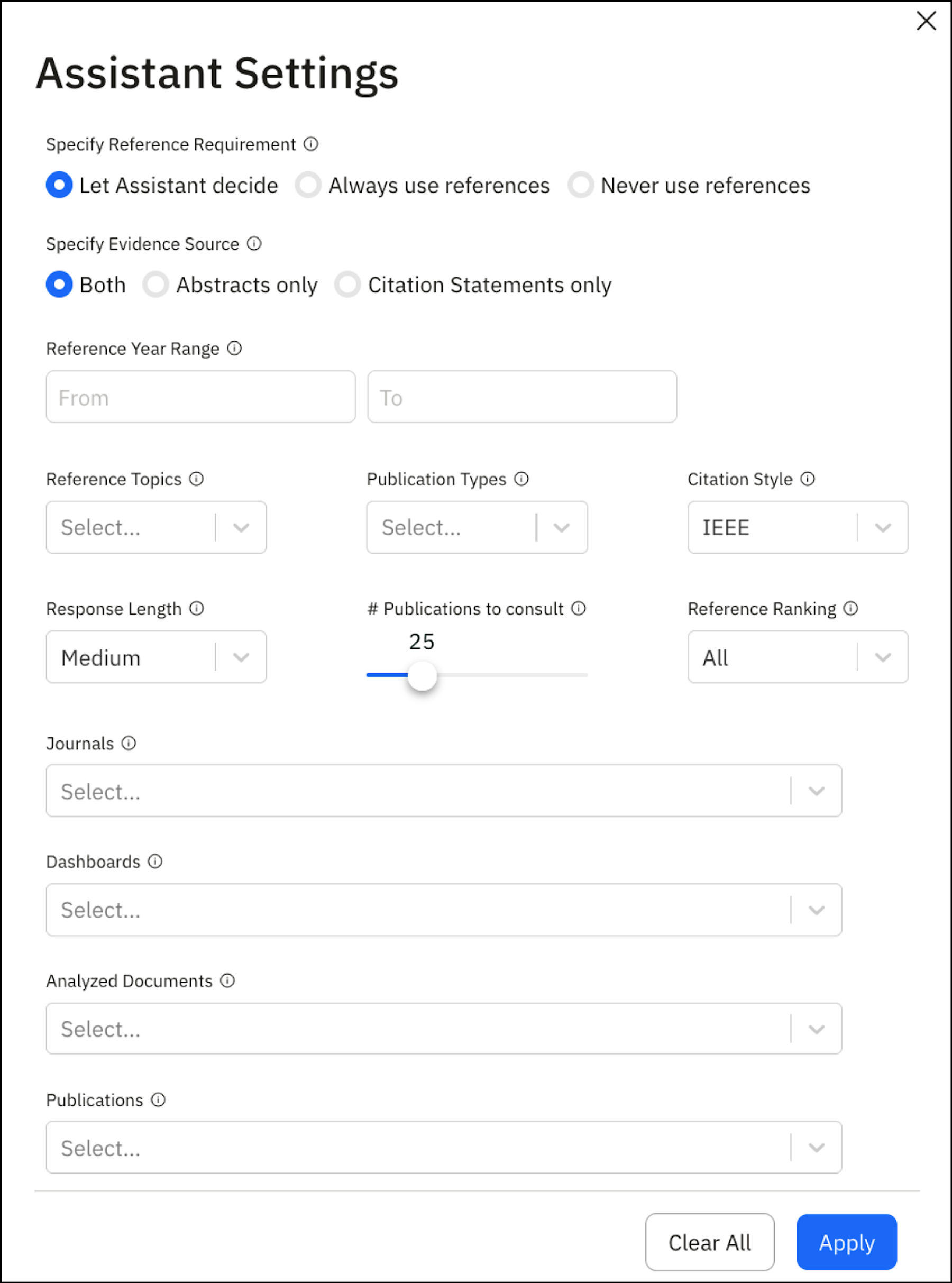
via Scite.AI
Scite takes citation analysis beyond simple counting by examining how papers use previous research. When you find contradictions in the literature, those often point to valuable research gaps worth exploring.
The tool identifies areas that may require investigation, although it focuses specifically on citation context rather than conducting a comprehensive gap analysis in research.
Scite best features
- Categorize citations as supporting, contradicting, or mentioning
- Track how specific claims are supported or challenged over time
- Discover methodological criticisms of influential studies
- Generate reports on citation context for grant applications
Related: Scite vs. Elicit: What are the main differences?
7. ChatGPT (Best for brainstorming potential gaps)
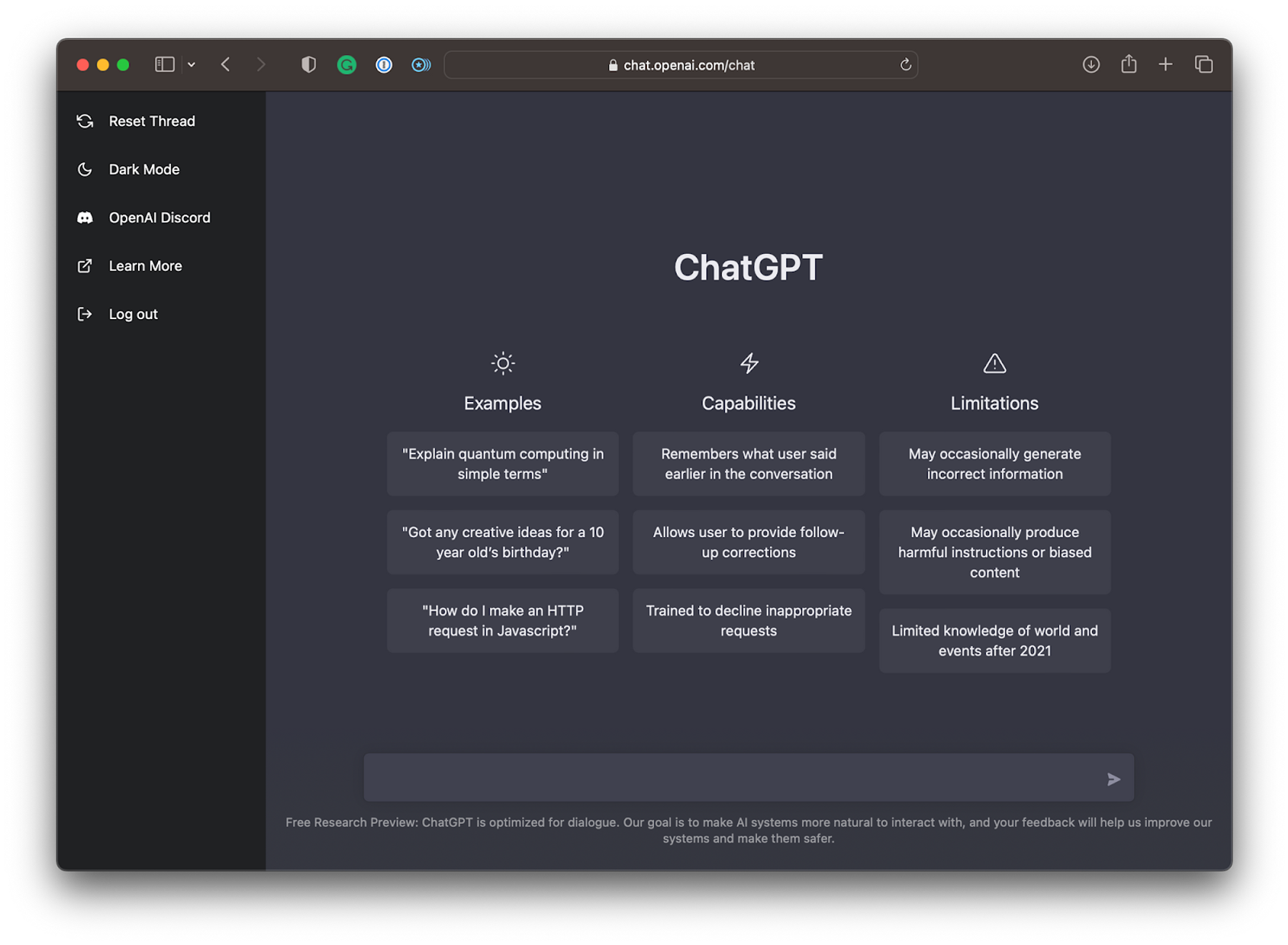
via ChatGPT
ChatGPT functions as a research brainstorming partner when you're exploring potential gaps in your field. The AI often suggests creative connections between concepts that might spark ideas about unexplored research areas.
The main limitation of using ChatGPT for academic writing is that it may provide misleading information or hallucinate references. As a result, its suggestions remain general rather than grounded in your research corpus.
ChatGPT best features
- Generate research questions and hypotheses through conversation
- Suggest methodological approaches for investigating gaps
- Brainstorm potential variables and research designs
- Discuss ethical considerations for proposed research directions
Related: ChatGPT alternatives for research.
Frequently Asked Questions
1. How do I know if a gap is worth studying?
To decide whether a research gap is worth studying, you need to evaluate its theoretical importance, practical relevance, and feasibility. That means asking if the gap advances scholarly knowledge, has a real-world impact, and can be realistically studied with the available resources.
2. Can AI tools identify research gaps?
AI research gap finders like Anara can quickly scan thousands of research papers, identifying underexplored themes or inconsistencies that human researchers may miss. This makes them especially useful for large-scale research projects. However, human insight remains critical when evaluating whether a gap is meaningful, relevant, and actionable.
3. What’s the difference between a research gap and a research question?
A research gap is an area where existing literature lacks sufficient information, clarity, or coverage. It signals that something important hasn’t been explored yet. A research question, on the other hand, is what you formulate to investigate that gap. The gap points to a missing piece in the field, while the question defines how you plan to explore or fill that missing piece.
4. What’s the difference between gaps and research opportunities?
A research gap refers to a missing or incomplete body of knowledge in the existing literature. Similarly, a research opportunity is a significant and feasible gap that warrants exploration. In other words, while all opportunities begin as gaps, not every gap qualifies as a strong research opportunity.
5. How often should I update my gap analysis?
If you’re working in a fast-changing field, it’s smart to revisit your gap analysis every few months to account for newly published research and shifting priorities. In slower-moving disciplines, updating once a year may be enough.
6. What if my gap analysis reveals no significant gaps?
If your analysis doesn’t show any meaningful gaps, your research scope might be too narrow. Expanding your focus to neighboring fields, exploring different research methods, or applying existing knowledge to new contexts can help surface fresh opportunities.
7. How do I avoid claiming gaps that other researchers dispute?
To avoid making controversial or unsupported claims, use systematic, evidence-based sources. Always refer back to current, peer-reviewed research rather than assumptions or outdated reviews. Anara makes this easier by highlighting the exact sentences in each paper that support your gap claims so that you can cite confidently and transparently.
8. What’s the best way to present gap analysis in grant proposals?
The strongest grant proposals present a clear and logical analysis of the research gap. Explain the type of gap you’re addressing—whether theoretical, methodological, or empirical—and show exactly where the literature falls short. Back your claims with current citations and draw a direct line between the identified gap and your proposed research. Anara helps structure this process by allowing you to organize sources, tag gaps, and connect them to your research objectives in a focused and credible way.
